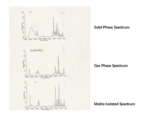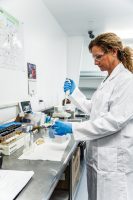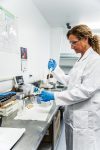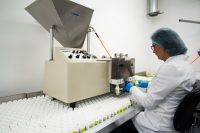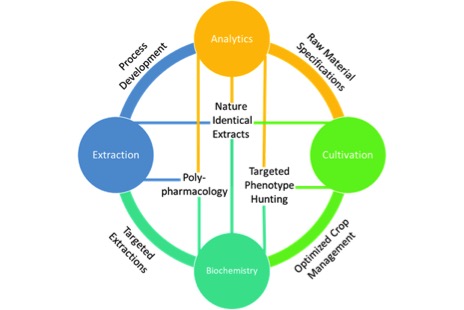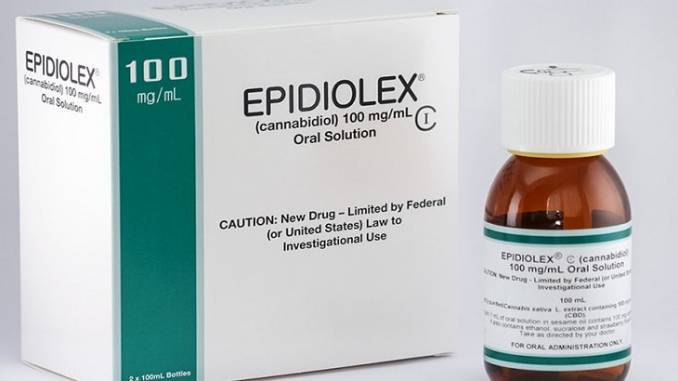Editor’s Note: The author will be teaching a 1/2 day short course on this topic at PITTCON in Philadelphia in March 2019.
The combination of gas chromatography and infrared spectroscopy (GC/IR) is a powerful tool for the characterization of compounds in complex mixtures. (1-5) Gas chromatography with mass spectroscopy detection (GC/MS) is a similar technique, but GC/MS is a destructive technique that tears apart the sample molecules during the ionization process and then these fragments are used to characterize the molecule. In GC/IR the molecules are not destroyed but the IR light produced by molecular vibrations are used to characterize the molecule. IR spectrum yields information about the whole molecule which allows the characterization of specific isomers and functional groups. GC/IR is complementary to GC/MS and the combination results in a powerful tool for the analytical chemist.
A good example of the utility of GC/IR vs GC/MS is the characterization of stereo isomers. Stereo isomers are mirror images such as a left hand and a right hand. In nature, stereo isomers are very important as one isomers will be more active then its mirror image. Stereo isomers are critical to medicinal application of cannabis and also a factor in the flavor components of cannabis.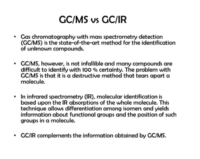
GC/MS is good at identifying basic structure, where GC/IR can identify subtle differences in structure. GC/MS could identify a hand, GC/IR could tell you if it is a left hand or right hand. GC/MS can identify a general class of compounds, GC/IR can identify the specific isomer present.
Why GC/IR?
Gas chromatography interfaced with infrared detection (GC/IR), combines the separation ability of GC and the structural information from IR spectroscopy. GC/IR gives the analyst the ability to obtain information complementary to GC/MS. GC/IR gives the analyst the power to perform functional group detection and differentiate between similar molecular isomers that is difficult with GC/MS. Isomer specificity can be very important in flavor and medical applications.
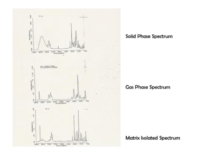
IR Spectrum of 2,4-Dichlorophenol in different physical states
Gas chromatography with mass spectrometry detection (GC/MS) is the state-of-the-art method for the identification of unknown compounds. GC/MS, however, is not infallible and many compounds are difficult to identify with 100 % certainty. The problem with GC/MS is that it is a destructive method that tears apart a molecule. In infrared spectrometry (IR), molecular identification is based upon the IR absorptions of the whole molecule. This technique allows differentiation among isomers and yields information about functional groups and the position of such groups in a molecule. GC/IR complements the information obtained by GC/MS.
Interfaces
Initial attempts to couple GC with IR were made using high capacity GC columns and stopped flow techniques. As GC columns and IR technology advanced, the GC/IR method became more applicable. The advent of fused silica capillary GC columns and the availability of Fourier transform infrared spectrometry made GC/IR available commercially in several forms. GC/IR using a flow cell to capture the IR spectrum in real time is known as the “Light Pipe”. This is the most common form of GC/IR and the easiest to use. GC/IR can also be done by capturing or “trapping” the analytes of interest eluting from a GC and then measuring the IR spectrum. This can be done by cryogenically trapping the analyte in the solid phase. A third possibility is to trap the analyte in a matrix of inert material causing “Matrix Isolation” of the analyte followed by measuring the IR spectrum.
Infrared Spectroscopy
The physical state of the sample has a large effect upon the IR spectrum produced. Molecular interactions (especially hydrogen bonding) broadens absorption peaks. Solid and liquid samples produce IR spectra with broadened peaks that loses much of the potential information obtained in the spectra. Surrounding the sample molecule with gas molecules or in an inert matrix greatly sharpens the peaks in the spectrum, revealing more of the information and producing a “cleaner” spectrum. These spectra lend themselves better to computer searches of spectral libraries similar to the computer searching done in mass spectroscopy. IR spectral computer searching requires the standard spectra in the library be of the same physical state as the sample. So, a spectrum taken in a gaseous state should be searched against a library of spectra of standards in the gaseous state.
IR of various phases:
- Liquid Phase – Molecular interactions broaden absorption peaks.
- Solid Phase – Molecular interactions broaden absorption peaks.
- Gas Phase – Lack of molecular interactions sharpen absorption peaks.
- Matrix Isolation – Lack of molecular interactions sharpen absorption peaks.
IR Chromatograms
GC/IR yields chromatograms of infrared absorbance over time. These can be total infrared absorbance which is similar to the total ion chromatogram (TIC) in GC/MS or the infrared absorbance over a narrow band or bands analogous to selected ion chromatogram. This is a very powerful ability, because it gives the user the ability to focus on selected functional groups in a mixture of compounds.
Conclusion
Gas chromatography with infrared detection is a powerful tool for the elucidation of the structure of organic compounds in a mixture. It is complementary to GC/MS and is used to identify specific isomers and congeners of organic compounds. This method is greatly needed in the Cannabis industry to monitor the compounds that determine the flavor and the medicinal value of its products.
References
- GC–MS and GC–IR Analyses of the Methoxy-1-n-pentyl-3-(1-naphthoyl)-Indoles: Regioisomeric Designer Cannabinoids, Amber Thaxton-Weissenfluh, Tarek S. Belal, Jack DeRuiter, Forrest Smith, Younis Abiedalla, Logan Neel, Karim M. Abdel-Hay, and C. Randall Clark, Journal of Chromatographic Science, 56: 779-788, 2018
- Simultaneous Orthogonal Drug Detection Using Fully Integrated Gas Chromatography with Fourier Transform Infrared Detection and Mass Spectrometric Detection , Adam Lanzarotta, Travis Falconer, Heather McCauley, Lisa Lorenz, Douglas Albright, John Crowe, and JaCinta Batson, Applied Spectroscopy Vol. 71, 5, pp. 1050-1059, 2017
- High Resolution Gas Chromatography/Matrix Isolation Infrared Spectrometry, Gerald T. Reedy, Deon G. Ettinger, John F. Schneider, and Sid Bourne, Analytical Chemistry, 57: 1602-1609, 1985
- GC/Matrix Isolation/FTIR Applications: Analysis of PCBs, John F. Schneider, Gerald T. Reedy, and Deon G. Ettinger, Journal of Chromatographic Science, 23: 49-53, 1985
- A Comparison of GC/IR Interfaces: The Light Pipe Vs. Matrix Isolation, John F. Schneider, Jack C. Demirgian, and Joseph C. Stickler, Journal of Chromatographic Science, 24: 330- 335, 1986
- Gas Chromatography/Infrared Spectroscopy, Jean ‐ Luc Le Qu é r é , Encyclopedia of Analytical Chemistry, John Wiley & Sons, 2006


